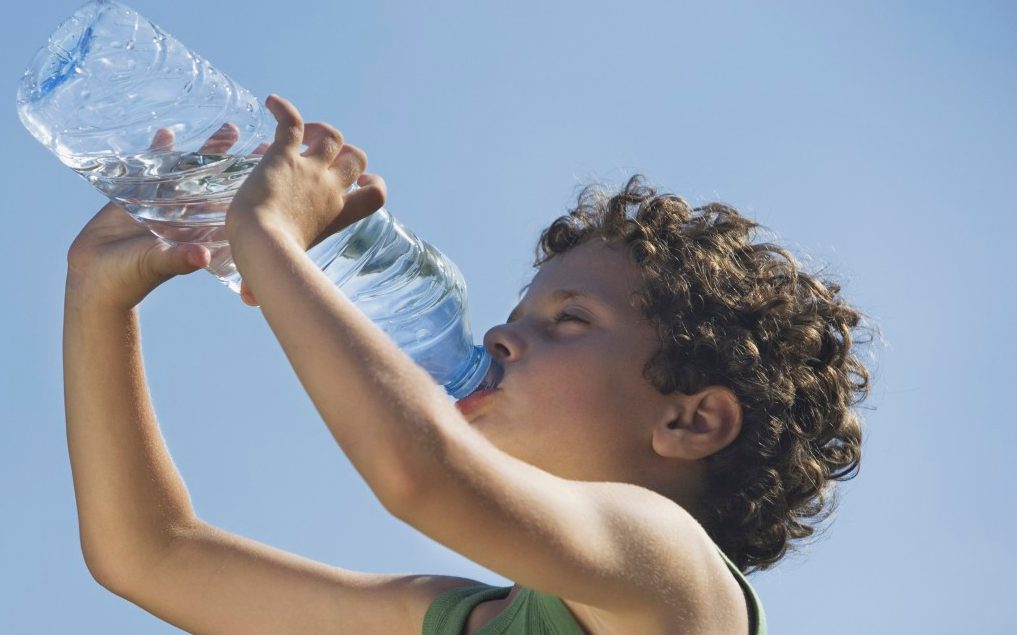The Benefits of Drinking Water for Your Child

For millions of U.S. youngsters, the benefits of drinking water include their physical, mental, and emotional health. Here’s what parents should know.
Simply drinking too little water may not sound like a serious problem, but the benefits of drinking water can impact how children and teens perform at school as well as their overall quality of life, according to a Harvard T.H. Chan School of Public Health study.
Other research has found that boys between the ages of 9 and 13 may be at greater risk of dehydration and need to drink more water than girls.
Water is crucial for a healthy body because it’s needed for physiological processes, such as adequate blood circulation, waste removal, temperature regulation, and metabolism. Severe dehydration after multiple episodes of vomiting or diarrhea or when a person stops drinking liquids can cause obvious health problems, such as fainting.
Even mild dehydration can trigger headaches, reduce physical performance in sports and daily activities, contribute to an irritable mood, and reduce the ability to think clearly.
YOU MIGHT ALSO LIKE: Our Raising Healthy Children section
Half of children may be dehydrated
The Harvard researchers investigated data from more than 4,000 children and adolescents who participated in the Centers for Disease Control and Prevention National Health and Nutrition Examination Survey.
They looked at results of urine tests from the youngsters’ medical records to see whether urine was highly concentrated (which indicates dehydration) or a normal concentration, indicating a healthy fluid intake.
The results showed more than half of all children and adolescents studied were dehydrated, especially boys. Black children were at the highest risk of inadequate hydration compared to whites, as were adolescents.
"These findings are significant because they highlight a potential health issue that has not been given a whole lot of attention in the past," said Erica Kenney, MPH, lead author and assistant professor of public health nutrition at Harvard. "Even though for most of these kids this is not an immediate, dramatic health threat, this is an issue that could really be reducing quality of life and well-being for many, many children and youth."
Almost 25 percent of the children and adolescents in the study said they never drank any water at all.
"The good news is that this is a public health problem with a simple solution," said researcher and Harvard sociologist Steven Gortmaker, PhD. "If we can focus on helping children drink more water — a low-cost, no-calorie beverage — we can improve their hydration status, which may allow many children to feel better throughout the day and do better in school."
Drinking water can prevent obesity
Low water intake is connected to drinking soda. Other research with data on 8,400 Americans ages 2 to 19 found that one in five drank no water in the 24 hours before the survey. But those children did have sweetened beverages.
“Kids who don’t drink water are more likely to get their fluids elsewhere,” notes Nathalie Muth, MD, a pediatrician in Carlsbad, Calif. “All it takes is an extra 70 calories or so per day for a child to gain excess weight and be at risk for overweight or obesity.”
Separate studies indicate that about 66 percent of U.S. children drink at least one sweetened beverage a day, and 30 percent drink two or more.
Research from King’s College in London and the Research Institute of Child Nutrition in Dortmund, Germany, has found a direct connection between water intake and weight.
A study of second and third graders in 32 elementary schools found the risk of being overweight decreased 31 percent in a year when teachers provided classroom lessons about the benefits of drinking water and gave children access to drinking fountains.
Kids need more water fountains
While it’s obvious that parents should encourage their children to drink plenty of water during the day, getting enough water at school isn’t necessarily easy.
A report headed by University of California pediatrician Anisha I. Patel, MD, revealed that, although drinking fountains are the main way America’s youngsters can get drinks of water at schools and child care facilities, water fountains are often poorly maintained and inconveniently located.
In addition, it’s not unusual for a school to have an inadequate number of drinking water outlets for the number of students enrolled, even when the school is following state code.
For example, the California building code requires that schools have only a single drinking fountain for every 150 students, Patel pointed out. That makes drinking water between classes almost impossible for many students.
Some school policies also discourage water consumption, banning reusable water bottles because of fears students will bring in alcoholic beverages. Many schools don’t allow drinking water in class, either, according to Patel.
In the British study, the youngsters drank 1.1 more glasses of water per day when filtered water fountains were nearby. The researchers also found water intake increased when the children received new water bottles.
Updated:
December 15, 2022
Reviewed By:
Christopher Nystuen, MD, MBA and Janet O'Dell, RN